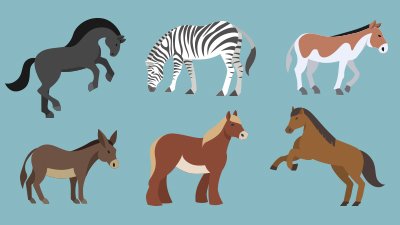When Hunters Fuel 'Evolution'
LiveScience: “Trophy Hunting Causing ‘Reverse Evolution’” Losing or gaining anatomical features, changing colors, growing bigger or smaller—it doesn’t matter how a biological population is changing, it’s evolution!
LiveScience editorial director Robert Roy Britt is taking a look at scenarios—reported earlier in the week by Newsweek—where bigger isn’t better: animal populations in which the largest individuals are the least likely to survive. Such is the result of artificial selection—and often, trophy hunting—by humans:
The “evolution” is the result of hunting restrictions that reduce the number of game allowed to be taken.
- The average size of Kodiak bears in Alaska declined because of trophy hunting.
- Tuskless elephants (who lack the genetic information for tusks) have risen from 2 percent of the African elephant population to 38 percent in certain groups.
- The horn size of one bighorn sheep population has declined by 25 percent over the past three decades, while male and female body sizes have fallen.
- Kangaroo and fish populations have also gotten smaller in response to human predation.
In some cases, such as the first example above, the “evolution” is the result of hunting restrictions that reduce the number of game allowed to be taken. Hunters then take only the largest “trophies.” Not only does this remove the largest animals themselves from the population; it removes their genes. The same goes with animals with other “trophy” elements, such as tusks or antlers. In other cases, the culprits are rules requiring a “minimum size” for harvested prey.
First of all, let’s be clear that as creationists, this makes complete sense. Removing the largest and most ornamented members of a population (and thus preventing them from breeding as much) is the same as selecting for smaller and less-ornamented members of those populations. Over time, tuskless elephants survive and reproduce more consistently than tusked elephants; the same goes for smaller-horned sheep, small bear, etc.
Second of all, we must emphasize that this study gives no support to “evolution” as commonly perceived: organisms gaining new anatomical features over time. These populations are losing genetic information, not gaining it; a tuskless elephant population has “evolved” only in the sense that it has “changed.” Yet evolutionary scientists and laymen will cite studies such as this as “proof” for the idea that molecules morph into men.
Observing changes in a population and calling it “evolution” corresponds to falling for a magic trick. Only someone totally unaware of how selective forces work would think that a population is magically “evolving” into something new.
For more information:
Remember, if you see a news story that might merit some attention, let us know about it! (Note: if the story originates from the Associated Press, Fox News, MSNBC, the New York Times, or another major national media outlet, we will most likely have already heard about it.) And thanks to all of our readers who have submitted great news tips to us.
(Please note that links will take you directly to the source. Answers in Genesis is not responsible for content on the websites to which we refer. For more information, please see our Privacy Policy.)
Recommended Resources

Answers in Genesis is an apologetics ministry, dedicated to helping Christians defend their faith and proclaim the good news of Jesus Christ.
- Customer Service 800.778.3390
- © 2024 Answers in Genesis







